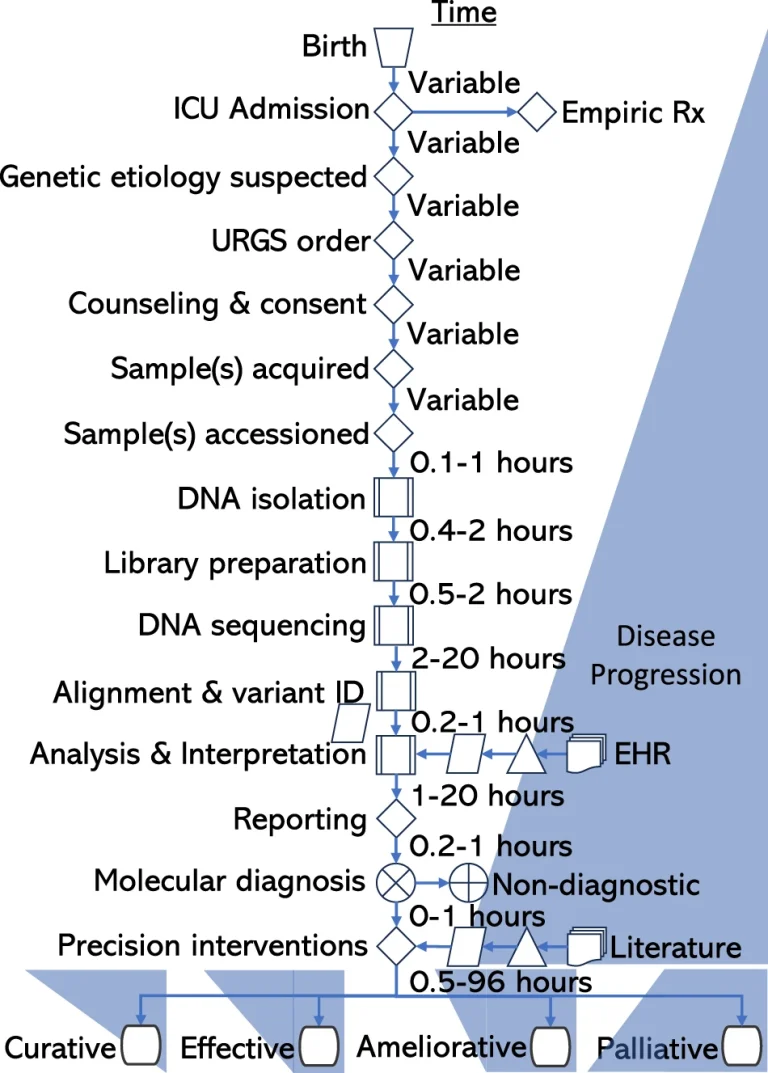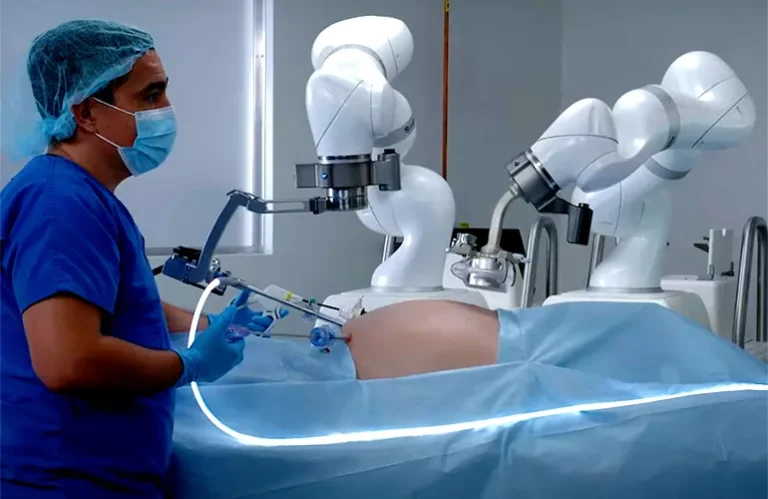
Rapid genomic sequencing for genetic disease diagnosis and therapy in intensive care units: a review
Stephen F. Kingsmore, Russell Nofsinger & Kasia Ellsworth
Abstract
Single locus (Mendelian) diseases are a leading cause of childhood hospitalization, intensive care unit (ICU) admission, mortality, and healthcare cost. Rapid genome sequencing (RGS), ultra-rapid genome sequencing (URGS), and rapid exome sequencing (RES) are diagnostic tests for genetic diseases for ICU patients. In 44 studies of children in ICUs with diseases of unknown etiology, 37% received a genetic diagnosis, 26% had consequent changes in management, and net healthcare costs were reduced by $14,265 per child tested by URGS, RGS, or RES. URGS outperformed RGS and RES with faster time to diagnosis, and higher rate of diagnosis and clinical utility. Diagnostic and clinical outcomes will improve as methods evolve, costs decrease, and testing is implemented within precision medicine delivery systems attuned to ICU needs. URGS, RGS, and RES are currently performed in <5% of the ~200,000 children likely to benefit annually due to lack of payor coverage, inadequate reimbursement, hospital policies, hospitalist unfamiliarity, under-recognition of possible genetic diseases, and current formatting as tests rather than as a rapid precision medicine delivery system. The gap between actual and optimal outcomes in children in ICUs is currently increasing since expanded use of URGS, RGS, and RES lags growth in those likely to benefit through new therapies. There is sufficient evidence to conclude that URGS, RGS, or RES should be considered in all children with diseases of uncertain etiology at ICU admission. Minimally, diagnostic URGS, RGS, or RES should be ordered early during admissions of critically ill infants and children with suspected genetic diseases.
Introduction
For three thousand years literature has attested to the ideal of an earth without infant mortality or parental grief1. However, infant mortality remains unacceptably high in the United States (5.6 deaths per 1000 births in 2022)2. Indeed, the US ranked thirty seventh in infant mortality among Organization for Economic Cooperation and Development countries in 2021. While infant mortality was a little lower in San Diego County, California (3.7 deaths per 1000 births in 2022), genome sequencing showed that single locus (Mendelian) genetic diseases were associated with 41% of infant deaths between 2015 and 2022 in that county. Furthermore, 31% of those genetic diseases had effective therapies. Had those genetic diseases been diagnosed at birth and indicated treatments been initiated, infant mortality may have been decreased—by up to 17% in that setting. If the estimate that 5.3% of 3.7 million United States newborns will suffer from a genetic disorder is correct, genome sequencing has the potential to change outcomes of many infants.
Background
First described twelve years ago, ultra-rapid genome sequencing (URGS) is a purpose-developed, clinical method for timely (2 day) diagnosis of genetic diseases in neonatal, pediatric, and cardiovascular intensive care units (NICU, PICU, CVICU)7. Since then, URGS has evolved into a scalable delivery system for molecular diagnosis of genetic diseases, metagenomic identification of pathogens, and therapeutic intervention in inpatient children (Fig. 1). Rapid genome and exome sequencing (RGS, RES) are variations of URGS, but with time-to-result of ten to fourteen days and, for the latter, sequencing limited to the ~1% of the genome that is exons of genes. Subsequent studies have shown that URGS, RGS, and RES are effective, universal, agnostic methods for single locus (Mendelian) genetic disease diagnosis [reviewed in 6]. When timely diagnosis is combined with targeted therapeutic interventions, URGS, RGS, and RES are associated with changes in outcome for 18% of NICU and PICU children6. Herein we review progress in URGS over the first twelve years and explore prospects for genome-informed healthcare for children with genetic diseases. This review is intended to be complementary to a recent review of the role of genome sequencing in NICUs.



